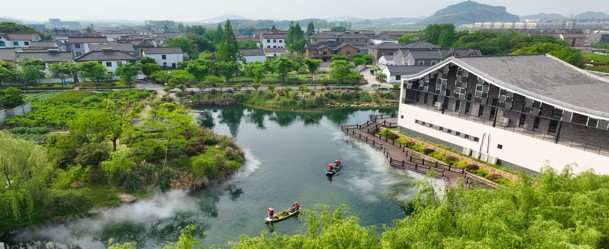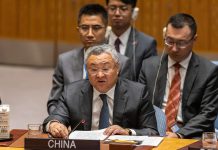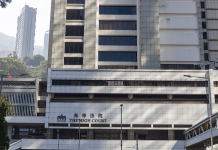BEIJING: For many, moss is nothing but a humble tiny plant growing in some inconspicuous wet corners, but for villagers in the mountainous town of Maoyang, it is a cash cow that has carried them out of poverty and on a path to further affluence.
The remote town is located in one of the least developed counties of east China’s Zhejiang Province, a major economic powerhouse and a pilot zone for achieving common prosperity.
Building on its distinctive natural resources, the town has nurtured a burgeoning niche industry of breeding moss and selling related products such as potted plants, which are in rising demand in China as people’s lives improve. Last year, the moss business generated over 17 million yuan (about 2.4 million U.S. dollars) for the villagers.
“To make locals rich, you have to foster an industry. To grow bigger, the industry has to leverage local advantages,” said Lei Xiaohua, the town’s Party chief and a delegate to the ongoing 20th National Congress of the Communist Party of China (CPC).
Lei now has even stronger confidence in her town’s future, as new arrangements have been made in a report to the congress to attain solid progress in promoting common prosperity for the country’s entire population.
Chinese modernization is the modernization of common prosperity for all, according to the landmark report delivered to the congress by Xi Jinping, general secretary of the CPC Central Committee.
The report charted a roadmap for building a modern socialist China in all respects over the next five years and beyond, outlining measures to boost and properly share the country’s development.
In pursuing high-quality development to boost the country’s material and technological foundations, China will move faster to build a modernized economy, according to the report.
It noted that efforts will be made to promote integrated urban-rural development and coordinated regional development in a bid to “effectively upgrade and appropriately expand economic output.”
To advance rural revitalization across the board, the country will steadily promote the revitalization of businesses, talent, culture, ecosystems and organizations in the countryside, according to the report.
Pledging to improve the people’s well-being and raise their quality of life, the CPC will improve the basic public service system to raise public service standards and make public services more balanced and accessible, the report said.
China will also improve its system of income distribution. The report said the country will ensure “more pay for more work” and encourage people to “achieve prosperity through hard work.”
Efforts will be made to promote equality of opportunity, increase the incomes of low-income earners, and expand the size of the middle-income group, the report added.
An essential requirement of socialism and a key feature of Chinese modernization, common prosperity refers to affluence shared by everyone. But what China desires is not egalitarianism.
“To use an analogy, we will first make the pie bigger, and then divide it properly through reasonable institutional arrangements,” Xi said in a special address at the 2022 World Economic Forum virtual session in January.
“As a rising tide lifts all boats, everyone will get a fair share from development, and development gains will benefit all our people in a more substantial and equitable way,” Xi said.
“China’s idea of common prosperity for all is a unique one, and it’s not building castles in the air,” said Liu Shangxi, head of the Chinese Academy of Fiscal Sciences.
The measures outlined in the report show that the country not only pays attention to income distribution, or “dividing the pie,” but also makes a point of “making the pie bigger,” which is the prerequisite and foundation for achieving common prosperity, Liu said.
Promoting common prosperity has been a persistent objective of the CPC. Constant efforts have been made since the founding of the People’s Republic of China, with landmark feats achieved in the past decade, including vanquishing absolute poverty and finishing building a moderately prosperous society in all aspects.
The vision gained particular domestic and global attention in 2020, with its goals defined in the 14th five-year plan for national economic and social development and long-range objectives through 2035. The document called for more tangible and solid progress to be made by 2035.
In the world’s largest developing nation, imbalanced and insufficient development is still prominent, and the development and income gaps between urban and rural areas as well as between different regions remain wide, Liu said.
With neat new houses and enhanced access to medical care, education and employment, residents in the ethnic minority border town of Kyipa in southwest China’s Tibet Autonomous Region have seen sea changes in the past decade. – Agencies






